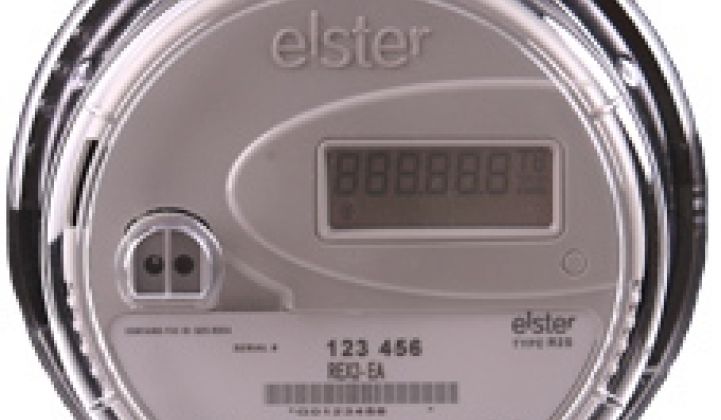Cisco’s (Nasdaq: CSCO) smart grid plan is to slowly replace the tangle of proprietary technologies that make up utility communications with an Internet Procotol-based alternative. Amongst its long list of partners, there are a few, like smart meter vendor Itron (Nasdaq: ITRI) and grid control player Alstom, that have taken a deeper dive into integrating their technologies into Cisco’s end-to-end IP-based architecture.
Add Elster to that list. The German smart metering giant announced Tuesday that it’s licensing Cisco’s reference design and software development kit (SDK) to integrate its newest line of smart meters into Cisco’s smart grid networks.
That means that Elster’s new REX meters will run on the same IPv6-compliant wireless mesh networking technology that Cisco and Itron are using to connect their jointly deployed meter networks with BC Hydro and other utility clients, or that partner Alstom is using to connect substation gear.
Compared to the mesh networks traditionally used by Elster, along with fellow meter networking companies like Landis+Gyr, Itron (Nasdaq: ITRI), Silver Spring Networks and Trilliant, Cisco’s technology is a different animal. Based on technology Cisco acquired from startup Arch Rock in 2010, it has been developed as part of the 6LoWPAN working group of the IETF, which puts it in the position of being able to claim end-to-end IPv6 compatibility all the way down to the physical layer -- that is, the radios that send the data.
Of course, IP is a central part of Silver Spring Networks’ smart meter networking technology, and companies like Elster, Itron and the rest have been saying for years that they’re moving their networks away from their proprietary networks and toward standard, IP-based technologies. But as Dave Buster, director of solutions architecture at Elster, put it in a Tuesday interview, partnering with Cisco has cut years from the time it would take to achieve that goal.
“All the vendors are making noises about moving to IPv6, but they’re moving at different speeds along that path,” he said. Elster, which was bought by U.K. investment firm Melrose for $2.3 billion earlier this year, will continue to support and make technology to support its existing base of tens of millions of meters, over time, he believes that utilities will increase pressure on vendors to move toward more interoperable, standards-based systems.
One reason is to capture the enhanced features of IPv6, noted Sanket Amberkar, Cisco’s senior manager of energy and smart grid marketing. Those include the built-in enterprise-class networking capabilities, such as quality of service and network management tools, multi-channel data traffic separation and prioritization.
IPv6 also offers the latest and greatest in cybersecurity, he noted. That’s an issue that may leap ahead of other technical considerations in terms of importance to utilities, given the reported security challenges that smart grid systems out there today have been having.
Behind it all is a broader push toward interoperability across multiple platforms, Buster said. For example, Elster and Landis+Gyr (now owned by Toshiba) announced last year that they’re working to make their systems interoperate with one another, to allow products from one vendor to run on networks from another, and vice versa.
Moving to an IPv6 format should make these kinds of one-to-one integrations much simpler, as well as open the potential to connect to devices not yet imagined for uses in the smart grid, Amberkar said. Duke Energy, for example, has been pushing for distributed intelligence in its transmission substation devices like the Cisco hardened routers and switches that are its core smart grid product. The networking giant competes against the likes of RuggedCom (now owned by Siemens), Alcatel and Juniper Networks in that space.
Elster’s meters, which also perform functions like outage notification, voltage monitoring and loss detection, have been called into play to support distribution automation projects like conservation voltage reduction (CVR), as well as helping utilities pinpoint which customers are being affected by blackouts and direct maintenance and repairs. So have smart meter competitors like Silver Spring, Echelon and others, to name a few.
Someday, utilities will want all these different smart meters to talk to all these different grid sensor, automation and control systems in new and flexible ways, Sanket noted. Cisco offers a smart grid networking and communications architectural framework, called GridBlocks, that it hopes will become the standard way of doing that, using its core routers and switches and tying in to other devices from a long list of partners.
Of course, that’s a common goal in the industry. Silver Spring, for one, is hoping to grow its revenues in pursuit of a long-awaited IPO, partly by growing the value of its deployed smart meter networks to manage distribution automation, home-area networks, plug-in EV charging and other such functions. Like Cisco, it has a long list of partners that are striving toward interoperability, not just in the laboratory but in the field.



